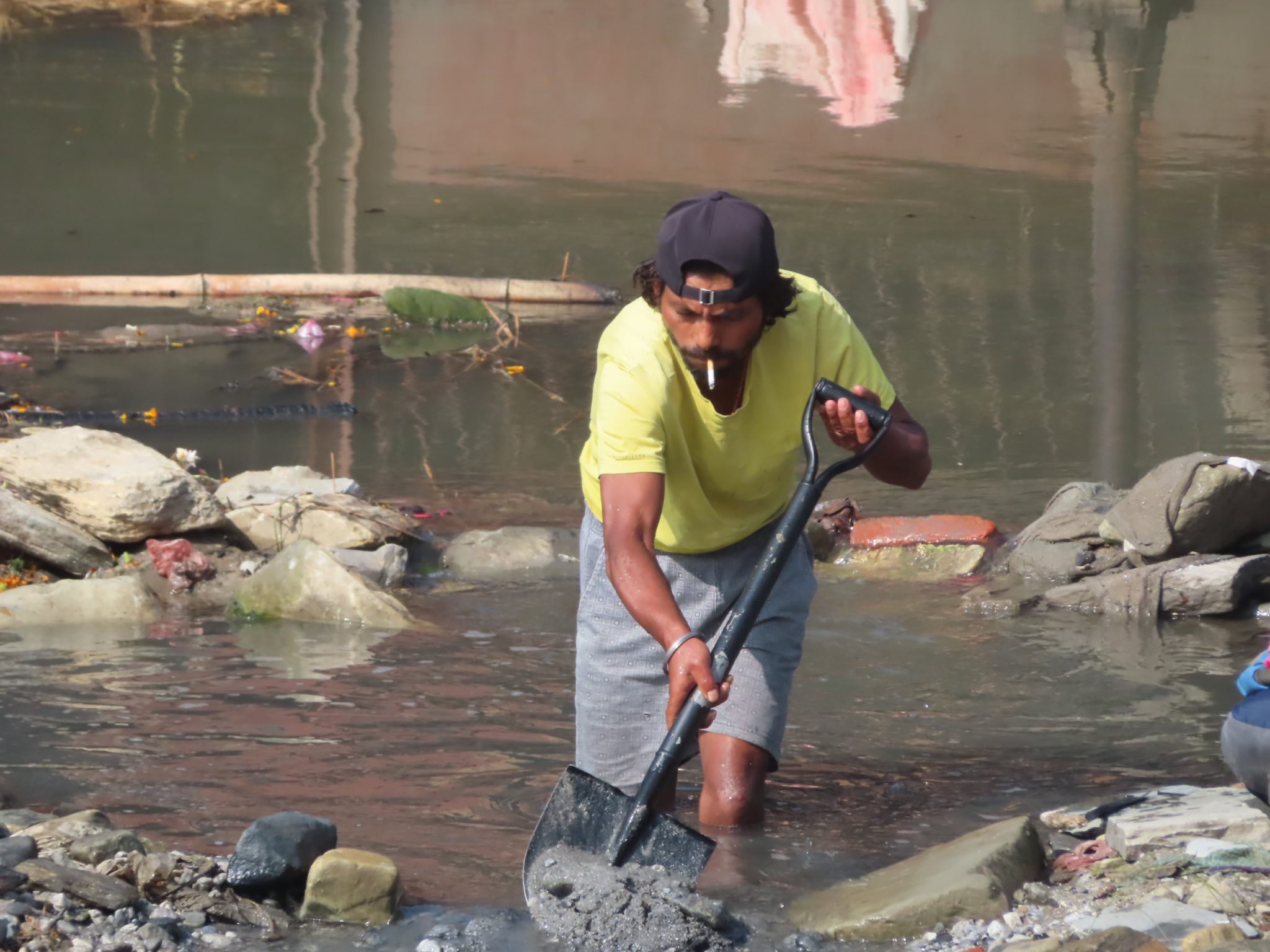Kathamandu is rather like Delhi – busy, noisy and full of cars, motobikes and exhaust fumes. But unlike Delhi it is still recovering from the earthquake damage sustained in 2015, and some people live in houses with external walls missing and have to climb over rubble to get to their homes. They are busy rebuilding the temples that were destroyed, but houses don’t seem to be such a high priority.
After a frenetic morning dodging motorbikes, I walked past a sign, high up on a wall, saying Garden of Dreams and wondered what it was. Looking through the door, I could see a ticket booth and a draconian set of regulations, but it looked peaceful, so I decided to pay up and see what was inside.
Taking care to abide by the rules e.g. “Unethical behaviour is strictly prohibited” “Only normal photography is allowed” and “Playing cards is strictly prohibited”, I went inside to find a beautifully restored neo-classical garden.


It was built in the European style in 1920 by Kaiser Shumsher Rani, son of the Prime Minister. He later became Foreign Secretary and attended the wedding of King George VI and Queen Elizabeth. But he is most famous for being at the sharp end of the first legally granted divorce in Nepal in 1943. He was married to Crown Princess Lakshmi, the eldest daughter of the King, which most people would consider to be a prestigious match, feeling very lucky to be punching above their weight in the spousal hierarchy. But not Kaiser; he was introduced to a young woman whom he decided to marry off to one of his sons or nephews, but at the last minute changed his mind and married her himself, making her his junior wife. Princess Lakshmi didn’t fancy the idea of a junior wife lounging around on the sunbeds in the Garden of Dreams, and she immediately divorced him, which put an end to his royal aspirations.
I was wandering through the gardens, enjoying the pavilions, pergolas and lakes, and listening to the birdsong, when I was shocked to see a couple sitting at a table brazenly playing Uno. A pack of cards seems a strange thing to bring on a visit to a garden, so I wondered if they’d brought the game along precisely because it’s forbidden and they could indulge in the thrill of the illicit without actually risking a prison sentence (I’m assuming that the penalty in Nepal for an illegal game of Uno isn’t incarceration).


***
One of the most famous sights in Kathmandu is Pashupatinath, where there are public cremations on the banks of the holy river Bagmati, and our guide took us there to see them and to understand the very different attitude of Hindus towards death. They regard death as a part of life’s journey, and the first step towards reincarnation, and so cremation takes place as soon as possible – sometimes as little as an hour after a person has died.
There are platforms all the way along the river and families process towards one of these, and then walk around it three times carrying the stretcher covered with a bright orange cloth.


It is the job of the oldest son to light the fire, in the mouth. This is important the spirit leaves the body through the mouth. Wet straw is then spread on top of the funeral pyre and the family wait until the cremation is complete, which can take several hours. The ashes are then scattered in the river, along with any gold jewellery belonging to the deceased. As a result there are rows of scavengers digging through the silt just a few feet from the mourners, which did seem rather distasteful to my Western eyes.


In some ways this reminded me of Victorian attitudes to death. It’s more of a public spectacle and there are professional mourners, hired to make plenty of noise. Seeing death as rebirth rather than the end, and being open about the realities involved, must surely take away some of the fear of the unknown that is so much a part of the modern Western attitude to death.
***
Walking around the narrow lanes of the oldest part of Kathmandu, I bent down to look inside a small shrine on the pavement. To my surprise, someone tapped me on the shoulder and explained that before you can look through the little door you have to ring the bell and then walk clockwise around the shrine. So we did it together, and then he introduced himself as Seto, and told me that he was a shoe mender with four daughters and that he’d like to show me around the neighbourhood in exchange for some food for his children. I was at a loose end and appreciated his enterprising spirit, so I agreed.
We saw the beautiful bead shops where married women go to buy their accessories (I’ve no idea where unmarried women buy theirs), the temples being rebuilt after the earthquake, the houses still in terrible disrepair, and then he took me to a special shrine, where I had to touch the coins and then say a prayer. It was the shrine to the god of toothache, and was very popular, judging by all the coins that had been nailed to it.




Seto assured me that I would now be free of toothache for ever. However, looking around, I could see that the surrounding streets were full of dentists’ andorthodontists’ surgeries. Apparently they’ve all come to the area because of its association with tooth problems, but I found this rather strange. If people believe that a god will cure their toothache, why would they need a dentist? And if they don’t believe it, why do they have a shrine?
